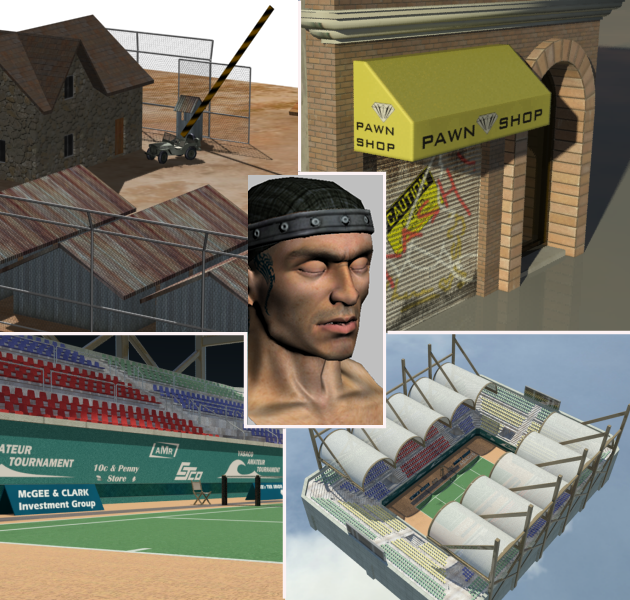Materials are like paint. With materials, you make apples red and oranges orange. You put the shine in chrome and the polish on glass. By applying maps, you can add images, patterns, and even surface texture to objects. Materials are what make your scenes look real.
Mapping is a method of projecting pictorial information (materials) onto surfaces. It is a lot like wrapping a present with wrapping paper, except the pattern is projected mathematically, with modifiers, rather than being taped to the surface.
This tutorial introduces the Material Editor, the master design studio for materials and maps. In the following tutorials, you will learn how to assign materials to objects, how to create basic materials, and how to apply textures.

Features Covered in This Section
To introduce materials, you will work with a scene that shows an army compound: a field headquarters that has been built around a farmhouse.
A single bitmap can contain multiple textures for various parts of an object. You use the Unwrap UVW modifier to control the placement of the textures.
Normal bump mapping is a technique that lets you simulate high resolution surface detail on low resolution polygonal models.
A composite map layers two or more texture maps onto one another, in order to produce a more detailed image.
This tutorial shows you how to map a material to a curved surface, such as a road or a garden hose.
You can apply multiple Multi/Sub-Maps to objects in a scene whenever you need to give similar objects in a group their own unique identity.